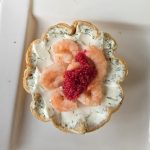
We visited Lake Atitlan from Antigua for 3 nights. We took a shuttle for US$22/person that picked us up at our apartment in Antigua and dropped us off in the center of San Pedro. It was about 3 hours through steep, winding mountain roads and would probably have been fine, maybe even pretty, if you didn’t have food poisoning and get car sick in combination. But did I get sick in a gas-station toilet and on the side of the road? Let’s leave a little mystery, okay? (Sidenote: Why did I eat shrimp and roe at a Danish bar in the middle of Guatemala?)
Lake Atitlan is in the crater of an erupted volcano at about 5,000 feet of elevation and has small villages dotted along the shore and volcanoes rising around the lake. It has been home to different Mayan tribes for centuries, and you can hear people speaking one of many Mayan languages, in addition to Spanish, as you walk along the streets. The lake is fed by rivers, streams, and rain, and it continues to rise. There’s an archeological site of an old Mayan village now completely underwater. We didn’t get a chance to visit, but it sounds really cool.
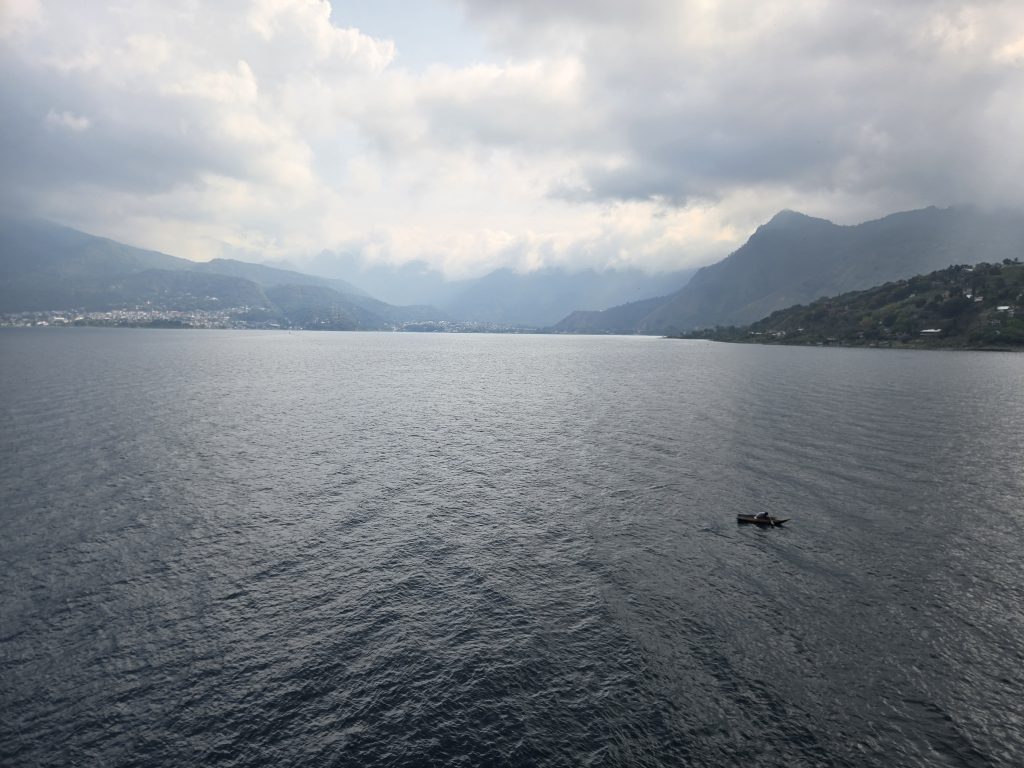
San Pedro
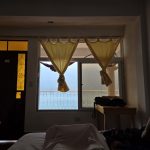
Despite someone’s objections (we won’t name names), we stayed in the village of San Pedro de Laguna. San Pedro is known as the backpacker, party village, and I’d say that description is accurate for the 2 intersecting main streets in town. We rented a room in a hotel at the very end of the main street running parallel to the shore, and it was quieter than the center but we still heard motorcycles, tuk-tuks, and barking dogs outside the windows all night. However, if you venture farther along the winding maze of alleys, it gets lusher, greener, quieter, and lovelier. We should have tried to find a hotel a bit farther out, but we tend to play it too safely when we’re going to a new place. Lesson learned.
After a recovery rest upon arrival, we walked the town looking for bland, easy food for an early dinner/late lunch but realized most of the restaurants we bookmarked weren’t open at 4 pm. We settled on a burger place because they had a veggie burger, but it was just some slices of eggplant in place of beef. Eggplant isn’t my favorite, but Andrew said the meat burger was good. The tiny place seemed to be an ex-pat hangout and, as we ate, it filled up with scruffy (and some shoeless) folks from the US, UK, and Australia, in addition to some very drunk tourists. It wasn’t really the vibe we wanted, although the Brit cooking the burgers had a good playlist going.
Hiking Indian’s Nose
We had an early night and woke up at 3:30 the next morning for our sunrise hike to Indian’s Nose (I’ve also seen it called Mayan’s Face). It was a short hike (about 40 minutes), but it was steep! Nevertheless, I’d say it’s accessible for most people with standard mobility if you give yourself enough time to take frequent breaks. I was the only person at the top with hiking poles, but I was glad to have them for the descent. I’d recommend bringing them, if you are already traveling with poles.
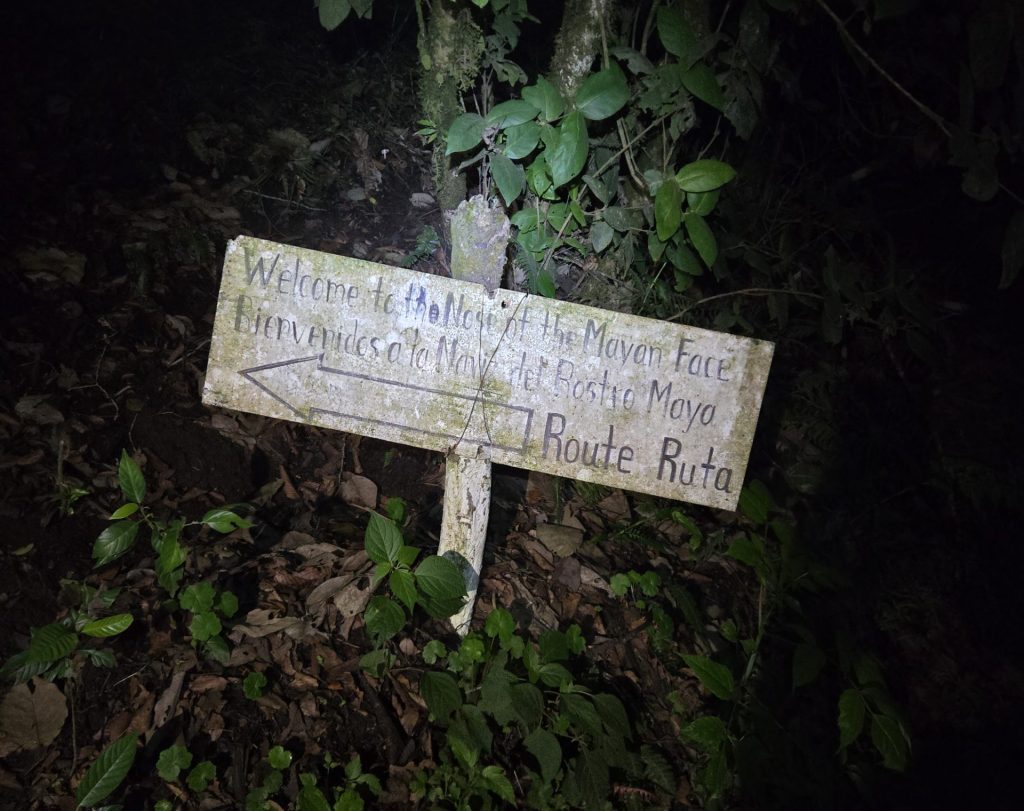
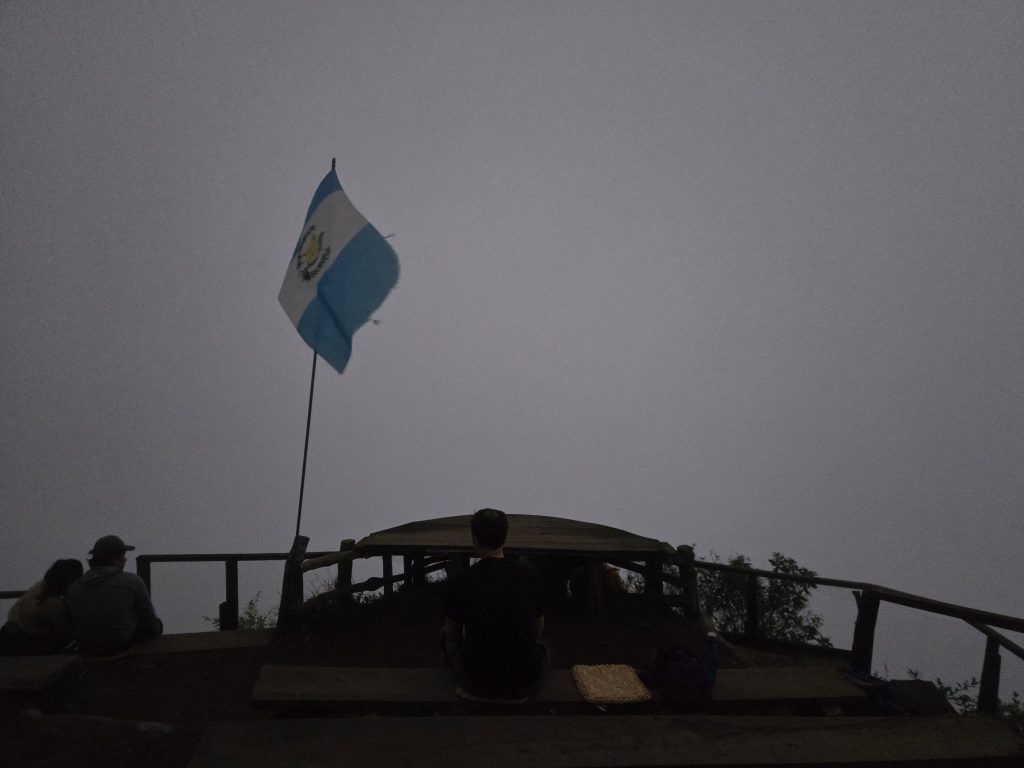
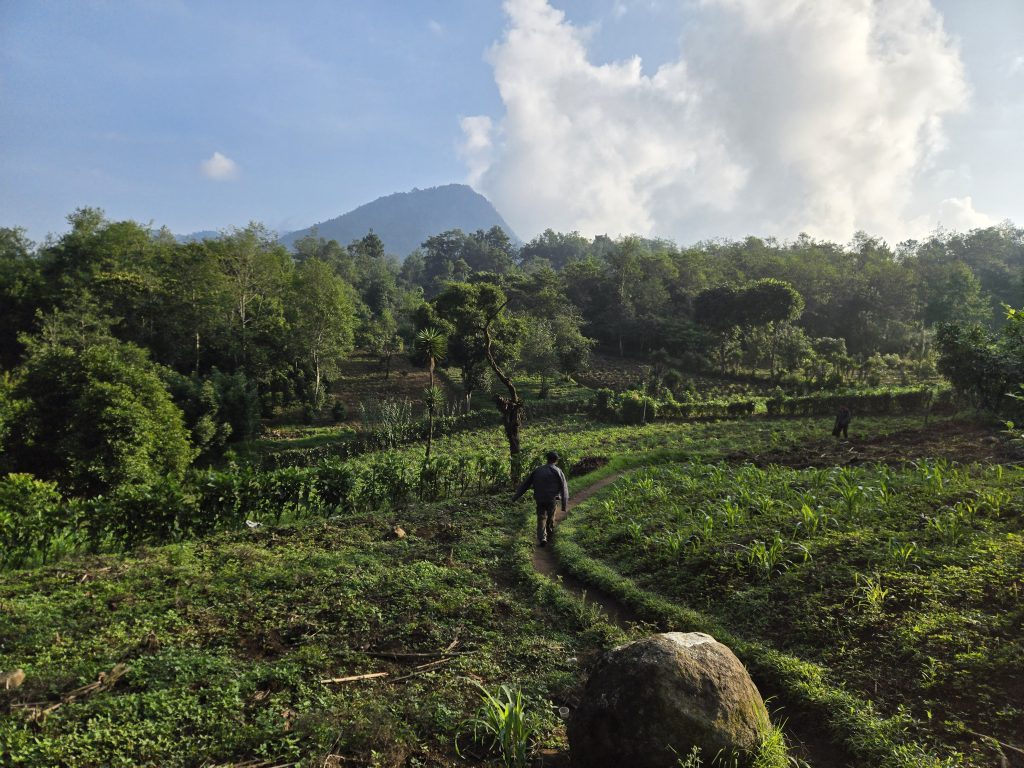
The summit is supposed to have an amazing view of the lake and 3 of the surrounding volcanoes, but the clouds never quite cleared for us. Walking back down, our guide Vick explained that the farmland we were going through was owned by locals and is some of the only farmland not in the hands of huge, often foreign, companies. The locals can trade parcels of land with each other and pass them down to family members, but ownership has to remain with the villagers. Common crops include coffee, corn, and beans.
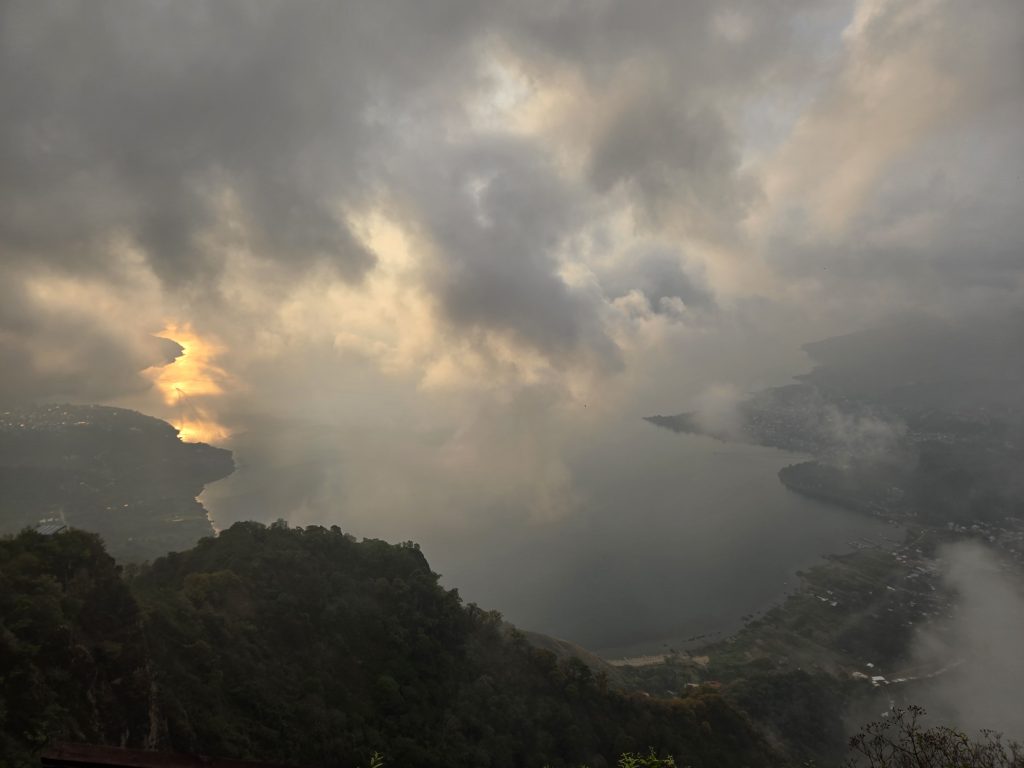
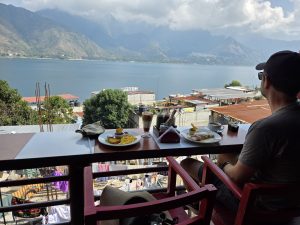
After a quick shower back at the hotel, we walked up the steep, intersecting main street in town to iCafe for breakfast overlooking the lake. Breakfast was delicious and the views were stunning. Then it was time for a nap, a little work, and a boat trip to the village of San Marcos.
San Marcos
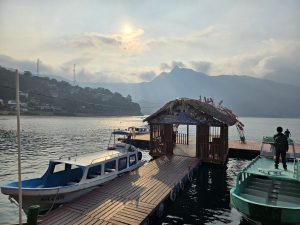
We walked to the main boat launch in the middle of San Pedro, and found a lancha to San Marcos waiting to depart. We confirmed with the ticket guy at the dock that it was going to San Marcos and that it was public, not private. You can hire private boats to take you around the lake, but there are plenty of public boats that cost Q30 (US$4) roundtrip per person (they call a return trip vice versa). We waited about 10 minutes on the half-full lancha for more people to filter in, and then we took off on the 10-minute ride across the lake.
San Marcos is known as more of a hippie village and is home to wellness retreats, yoga studios, and holistic centers. It is also home to the Cerro Tzunkujil Nature Reserve, a protected park along the water with a spot for cliff diving and lots of rocky nooks for swimmers to relax. It costs Q20 (about US$2.60) to enter.
When we disembarked in San Marcos, there was another ticket guy collecting money from some of the passengers. We learned you can pay before you get on the boat or when you get off, so make sure to keep your ticket handy if you pay in advance.

The village had a palpably different atmosphere than San Pedro, and I enjoyed walking around the shaded, green streets and alleys, hearing the birds chirp and seeing butterflies flit around. Andrew pointed out there weren’t any tuk-tuks or motorcycles on the streets, which made walking around so much more enjoyable. I hadn’t even noticed, but then I realized how unpleasant the noise, smog, and stress of darting out of the path of vehicles is in San Pedro.
We went to Cafe Clavandier for a late lunch. It was a small, outdoor cafe with a handful of tables, a fish pond, and a friendly German Shepherd. I ordered the mushroom sandwich not expecting much, but it was amazing. Mushrooms, onions, and peppers were sauteed in a super flavorful, drippy sauce, stuffed into a soft baguette, and topped with gooey cheese. It came with a fresh side salad and chips as well.
Cerro Tzunkujil
After lunch we walked to Cerro Tzunkujil, paid our small entrance fee, and I went to change into my bathing suit in the clean toilets. Andrew would be lifeguarding from the rocks because the water was too cold for him, about 72 degrees. We stopped at the first rocky outcrop that had decent access to the water. There aren’t really beaches in the reserve, so if you see a nice area, just go for it. We liked that there wasn’t anyone else around as well. It was a little tricky navigating the rocks in my flip-flops, but we made it without trouble.
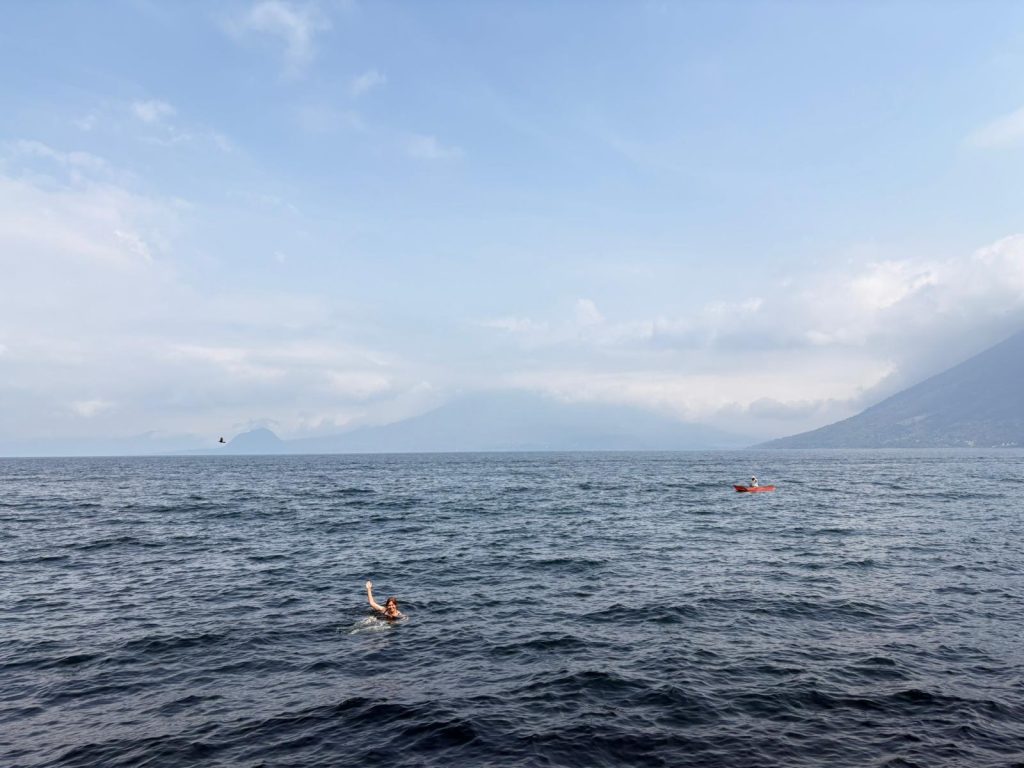
After a refreshing swim, we walked over to see the cliff divers. The reserve has a platform about 40 feet above the water where you can jump into the lake. I’m terrified of heights, so I was absolutely not going to jump, but it was fun to watch some guys do backflips off the platform into the water. We found a shaded bench and people watched while I dried off before heading back to the lancha for San Pedro. It was a beautiful, relaxing afternoon.
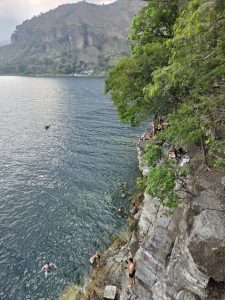

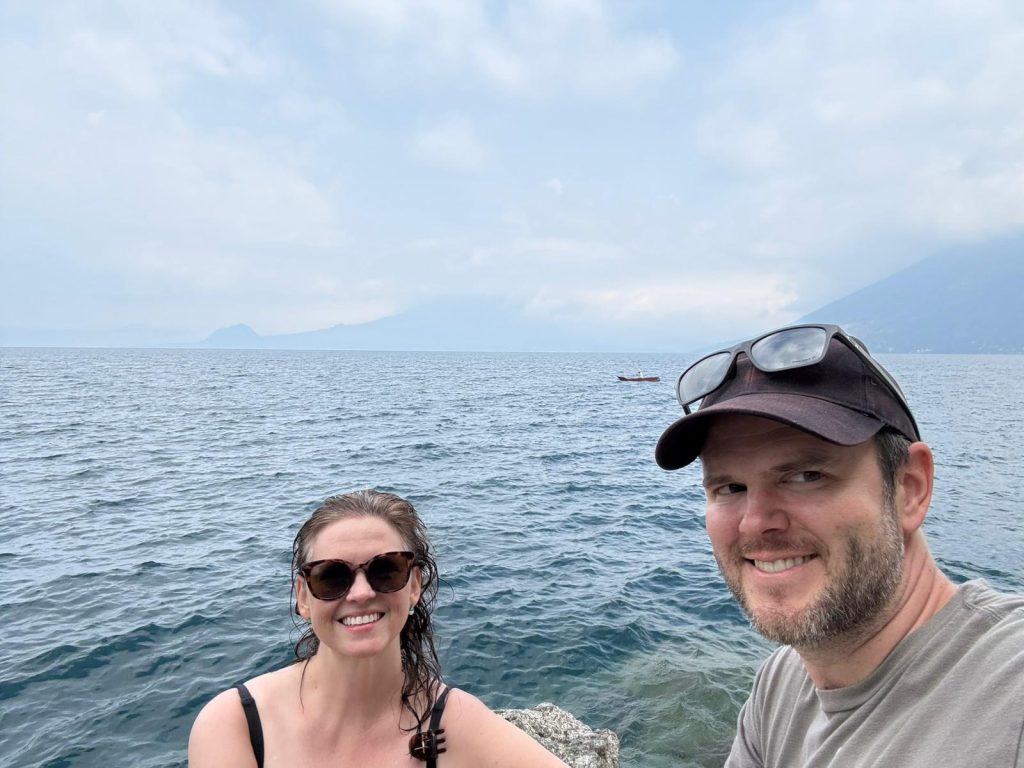
Tour of San Juan, Santiago, and San Pedro
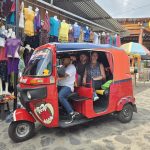
The next day we had another excursion scheduled with Vick. We booked both of them in advance on Viator, but you can find him directly here. This was a cultural tour of the villages of San Juan, Santiago, and San Pedro (where we were staying). Andrew and I were both a little disappointed that the day turned out to be a shopping tour more than anything, but it was nice to see more of the villages.

We rode in a tuk-tuk from San Pedro to neighboring San Juan and started at a local bee farm. A woman there explained the different types of bees they have onsite, let us try 3 different types of honey, and then took us into the shop to explain all the products they make with the honey and the wax. She left us alone to shop but we didn’t buy anything.
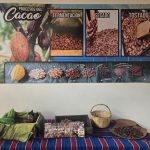
From there we visited a chocolate factory, where a man explained the process from cacao pods to finished chocolate bars. Then he took us to the shop, let us sample 4 types of chocolate and 2 types of chocolate rum, and left us alone to shop. We bought 2 chocolate bars.
After the chocolate factory, we walked up the steep Calle de las Sombrillas that runs up from the lancha and is lined with shops. We stopped at a store selling woven clothes and home decor, and a woman led us to the back of the shop where she had a demonstration area. It was beautiful with colored cotton yarn and dyes made from natural ingredients like rosemary and basil. She explained how her women’s collective processes raw cotton by hand and with wooden tools, dyes the cotton, and then weaves it into gorgeous textiles. I bought a shirt and a souvenir for my mom.
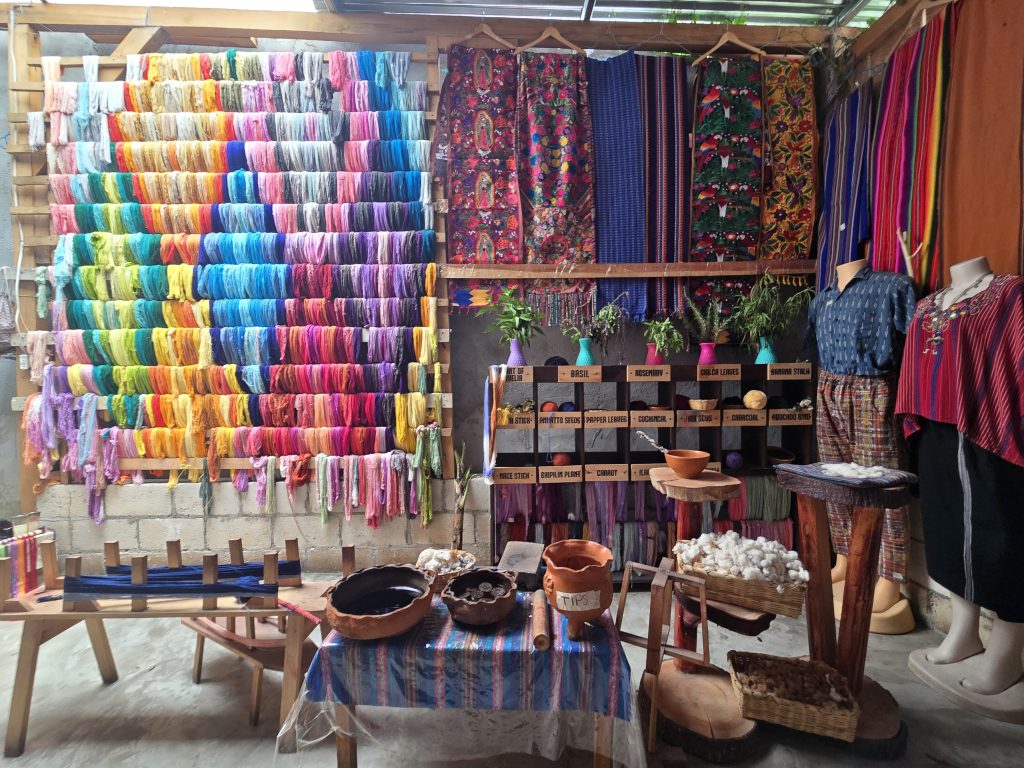
From there, we visited a local fruit and veggie market, a Catholic church, and a coffee festival that just happened to be taking place while we were there. The streets of San Juan were beautiful and colorful, but after a while all the shops and vendors started to blur together. From San Juan, we took a tuk-tuk back to San Pedro, this time going to the smaller public lancha in town to catch a boat to Santiago.
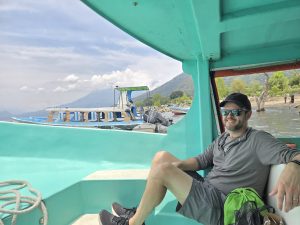
Santiago is smaller and seemed less touristy than the other villages we visited but had many of the same tourist shops lining the main road into town from the lake. We didn’t stop at any, but headed for the Catholic church up the hill. The church had a priest from Oklahoma working there during the Guatemalan civil war who helped many of the rebels and offered sanctuary to those affected by the war. There is now a petition under review by the Catholic church to make him a saint. After the church visit, we took a boat back to San Pedro, had lunch, and visited another Catholic church. That was the tour. It was a fine way to spend the day, but I wish we had learned a little more about the different cultures in each village, their history, what differentiates them beyond clothing styles and colors, that sort of thing. Still, we’re grateful for the experience.
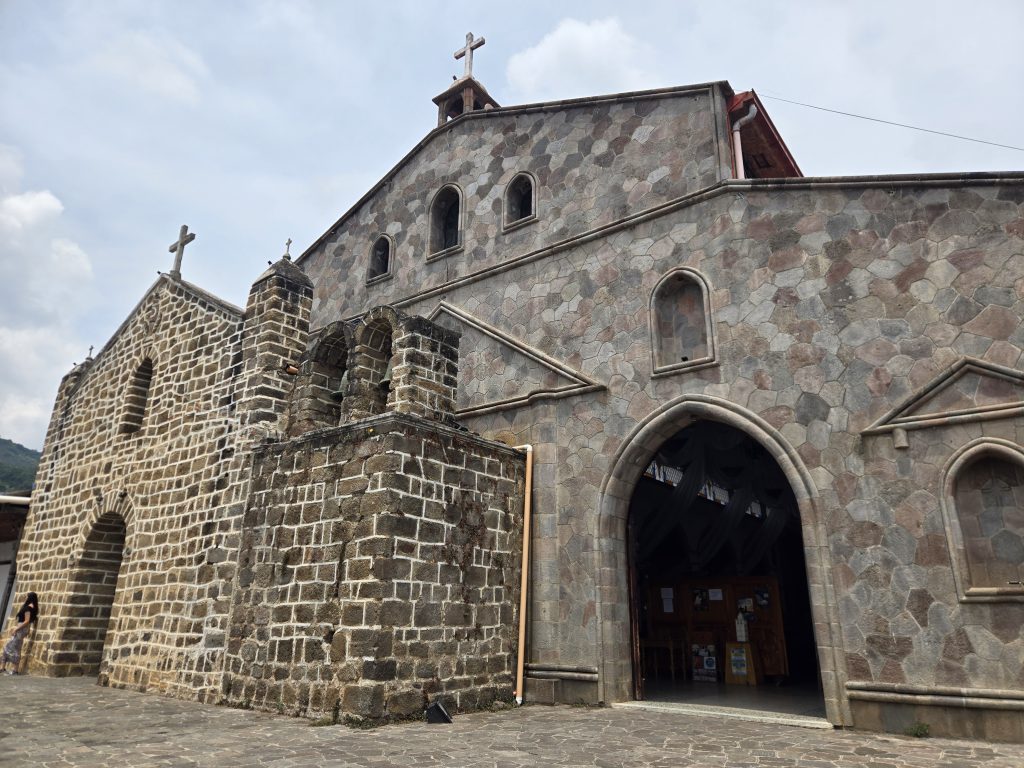
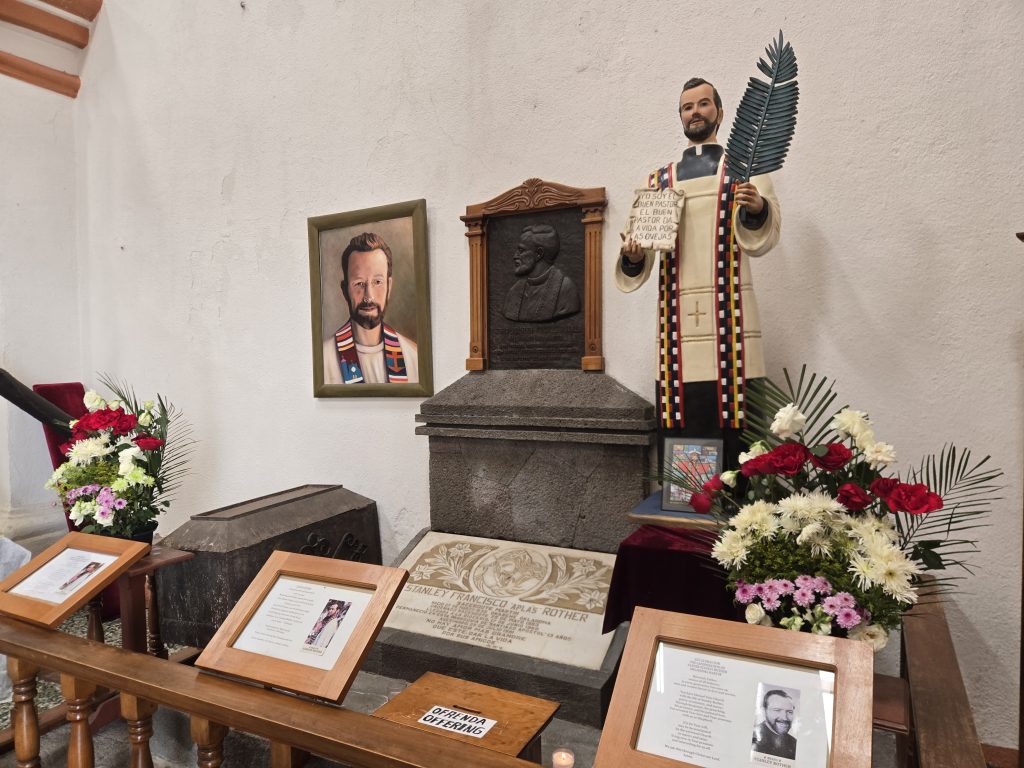
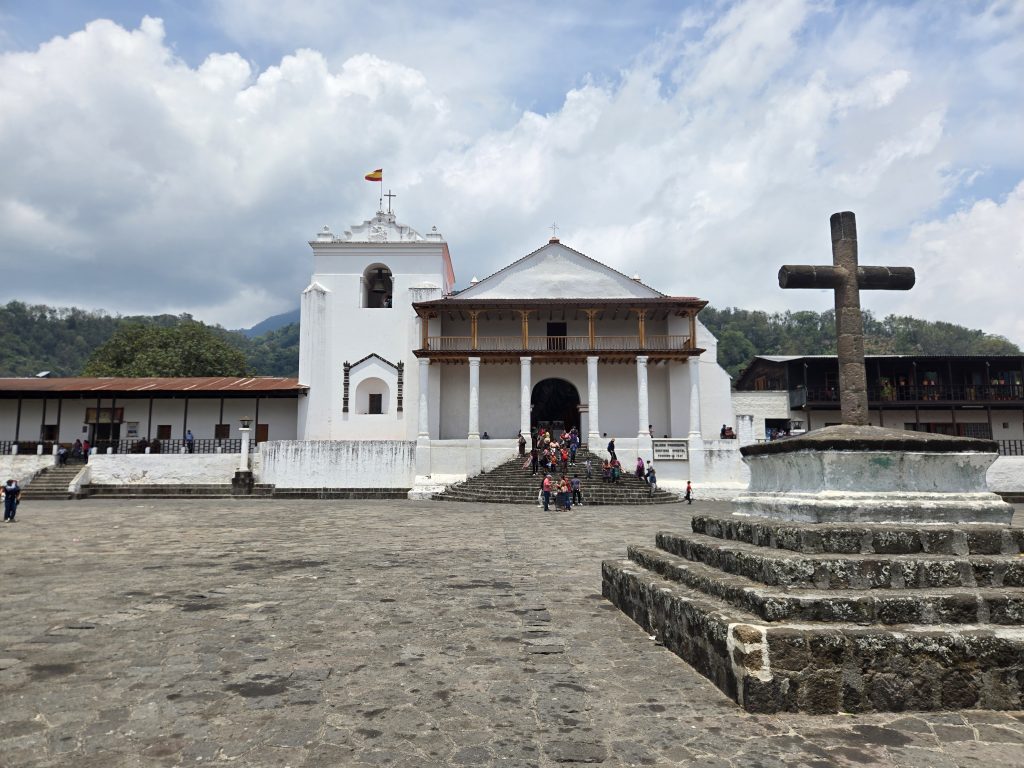
Last night and morning

For our last dinner on the lake, we walked to El Gato Perdido (The Lost Cat), which is above a hotel and had great reviews. We split a pizza and dessert and watched the sky darken over the lake. The restaurant was well named and we saw multiple cats around the property, some skittish but some happy for tourist attention. I highly recommend it, and not just for cats; the food was great.
The next morning we took the shuttle back to Antigua. I made sure to eat safe, bland food for dinner and breakfast, and I had bought some dramamine at the pharmacy in San Pedro. I took 2 pills and the ride back was a breeze.
If we were to return, we’d probably try to stay in San Marcos, or one of the smaller villages we didn’t visit. We’d also visit the Museo Lacustre in Panajachel (and visit Pana in general, which we skipped). And I’d swim in the lake at least one more time.
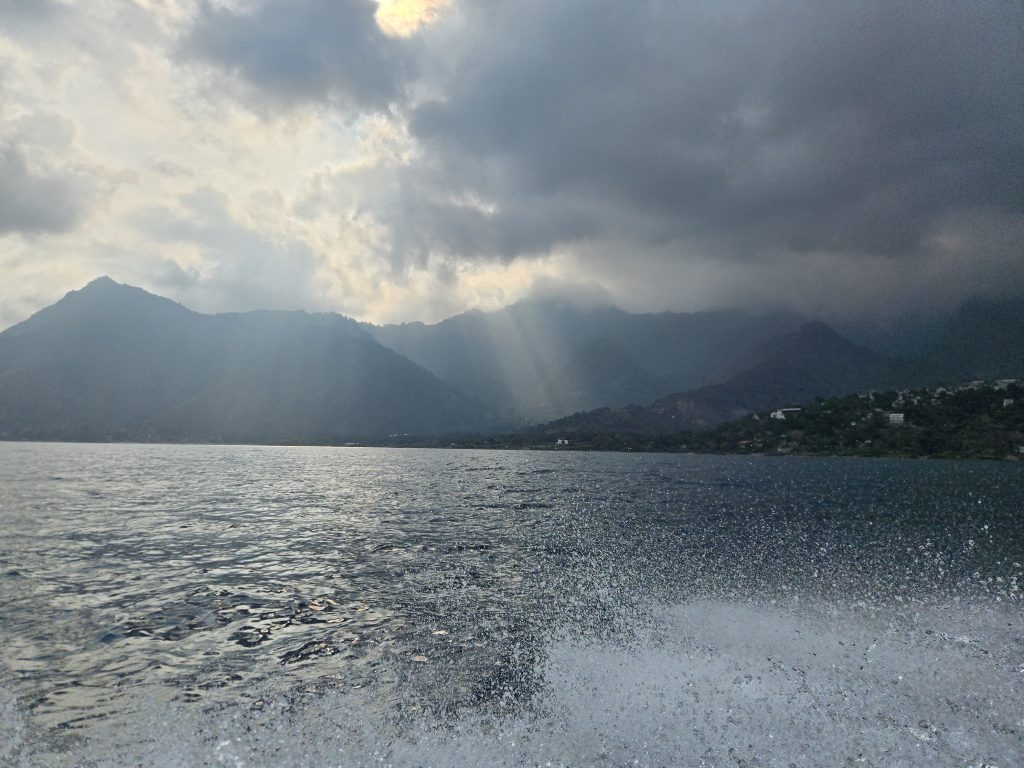

Recommendations
In San Pedro:
El Gato Perdido: A more secluded restaurant above a hotel with good pizza and property cats.
iCafe: We enjoyed our breakfast and views.
Restaurante Laila: We had lunch here one day (good veggie quesadilla). It has great views above San Pedro, but don’t order chicken unless you’re comfortable watching the chef take a live chicken from the rooftop coop to prepare for you.
In San Marcos:
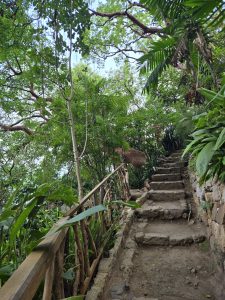
Cerro Tzunkujil Nature Reserve: My top experience in Lake Atitlan! It’s a must-see.
Cafe Clavandier: Excellent vibes and vegetarian sandwich
In San Juan:
Artesania Maya: Women’s weaving collective. It’s pricier than most shopping in the area, but I didn’t mind paying to support their mission.
Xocolotl San Juan: Chocolate tour and shop, nothing wrong with sampling some chocolate rum at 10 am!
Iglesia Católica San Juan La Laguna: You can see the original brickwork in the old entrance and compare it with the more recent building style.
In Santiago:
Saint James the Apostle Church: A good example of Spanish colonial architecture. The Spanish built the church on top of an existing, sacred Mayan pyramid.
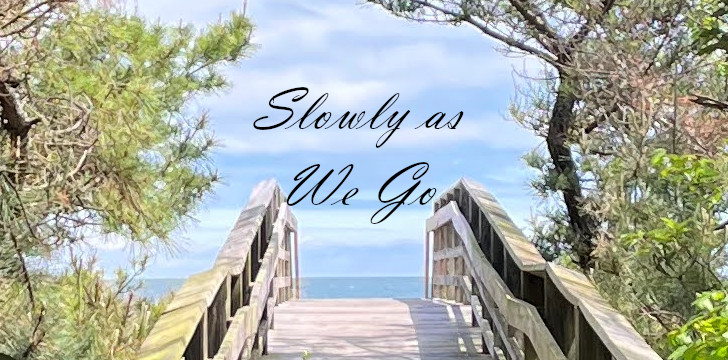

Pingback:A Month in Antigua, Guatemala – Slowly As We Go